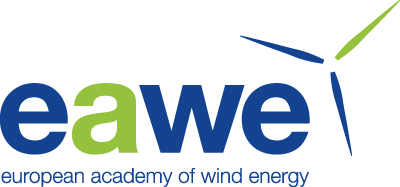the Creative Commons Attribution 4.0 License.
the Creative Commons Attribution 4.0 License.
Impact of atmospheric turbulence on performance and loads of wind turbines: Knowledge gaps and research challenges
Abstract. Wind energy harvesting from the atmosphere takes place in the atmospheric boundary layer. The boundary layer shear and buoyancy create three-dimensional turbulent eddies spanning a range of scales that form a continuous forward cascade of kinetic energy to the smallest scales of motion where energy is dissipated. Large-scale atmospheric circulations modulate the boundary layer turbulence, characterized by coherence and intermittence. As wind turbines have grown in size and the integrated control of both turbines and wind farms has spanned greater distances, the relationship between the scales of atmospheric turbulence and the design and operation of wind energy facilities has entered new territory. The boundary layer turbulence impacts both wind turbine power production and turbine loads. Optimizing wind turbine and wind farm performance requires understanding how turbulence affects both wind turbine efficiency and reliability. While the characteristics of atmospheric boundary layer turbulence have been observed and studied in detail over the last decades, there are still significant gaps in understanding the impact of turbulence on wind power resources and wind farm operations. This paper outlines the current state of turbulence research relevant to wind energy applications and points to gaps in our knowledge that need to be addressed to effectively utilize wind resources.
Competing interests: I would like to disclose that my co-authors Prof. Sukanta Basu (who contributed equally to the manuscript), Prof. Joachim Peinke and Dr. Paul Veers are Associate Editors of Wind Energy Science.
Publisher's note: Copernicus Publications remains neutral with regard to jurisdictional claims made in the text, published maps, institutional affiliations, or any other geographical representation in this paper. While Copernicus Publications makes every effort to include appropriate place names, the final responsibility lies with the authors. Views expressed in the text are those of the authors and do not necessarily reflect the views of the publisher.- Preprint
(13977 KB) - Metadata XML
- BibTeX
- EndNote
Status: final response (author comments only)
-
CC1: 'Comment on wes-2025-42', Etienne Cheynet, 16 Apr 2025
- AC3: 'Reply on CC1', Branko Kosovic, 03 Oct 2025
-
CC2: 'Comment on wes-2025-42', Johan Arnqvist, 16 Apr 2025
I've read and really enjoyed the manuscript. Thank you to all the authors that compiled such an, in my mind, important document. Although the manuscript really covers a lot of ground, I did miss the effect of internal boundary layers and the, still unresolved, question of how and to which extent, turbulence over forests are to be treated differently than turbulence over low vegetation. I realize these may not be considered important in the grand picture. Since it is in preprint form I noted some thoughts while reading and attach them here in case they could be useful in the revision process. Please note that this is not a full review.
Disclaimer: this community comment is written by an individual and does not necessarily reflect the opinion of their employer.- AC4: 'Reply on CC2', Branko Kosovic, 03 Oct 2025
-
RC1: 'Comment on wes-2025-42', Anonymous Referee #1, 06 May 2025
- AC1: 'Reply on RC1', Branko Kosovic, 03 Oct 2025
-
RC2: 'Comment on wes-2025-42', Anonymous Referee #2, 05 Jul 2025
- AC2: 'Reply on RC2', Branko Kosovic, 03 Oct 2025
Viewed
| HTML | XML | Total | BibTeX | EndNote | |
|---|---|---|---|---|---|
| 1,366 | 744 | 42 | 2,152 | 39 | 77 |
- HTML: 1,366
- PDF: 744
- XML: 42
- Total: 2,152
- BibTeX: 39
- EndNote: 77
Viewed (geographical distribution)
| Country | # | Views | % |
|---|
| Total: | 0 |
| HTML: | 0 |
| PDF: | 0 |
| XML: | 0 |
- 1





Dear Dr. Kosović and co-authors,
I am attaching a PDF version of my Community Comment (CC). It includes both general observations and specific suggestions intended to support the further development of your manuscript. I have aimed to provide constructive feedback, and I hope these comments prove helpful as you continue to refine your contribution.
Please note that the comment is somewhat extensive. This reflects the scope of the manuscript as well as my own interest in the topic. I fully recognise that many of the points raised may already be well known to you. They are offered in the spirit of open and constructive dialogue. I am also aware that submitting a lengthy, non-anonymous comment to such a distinguished group of co-authors might be bold, and perhaps not the safest career move, but I trust the scientific process (and your goodwill) will treat it kindly.
Best regards,
Etienne Cheynet